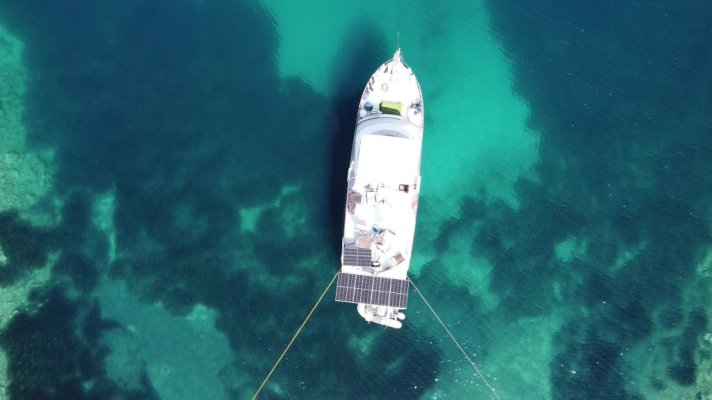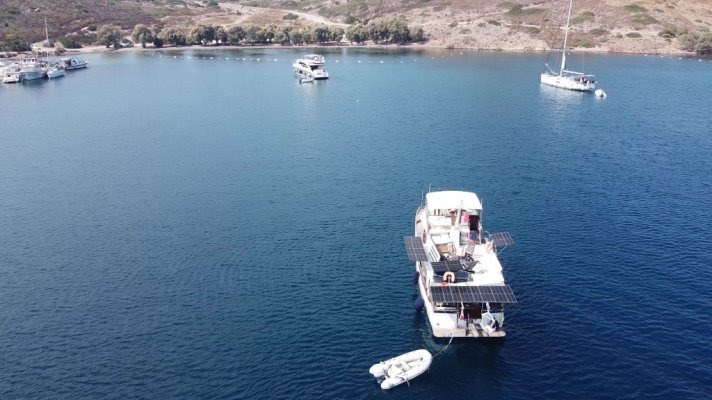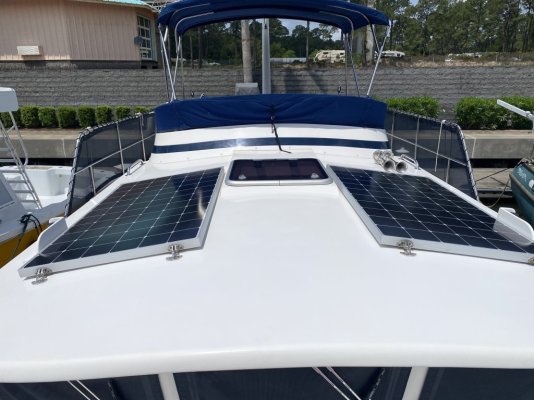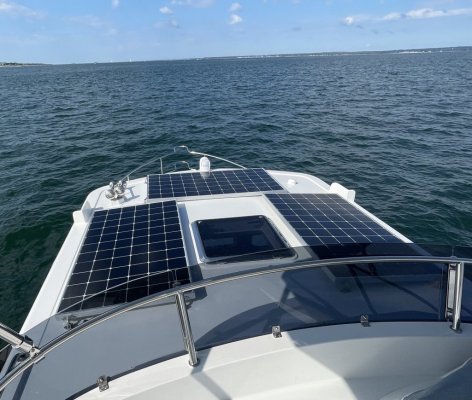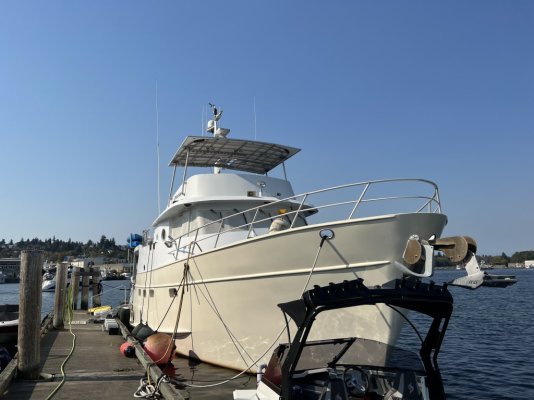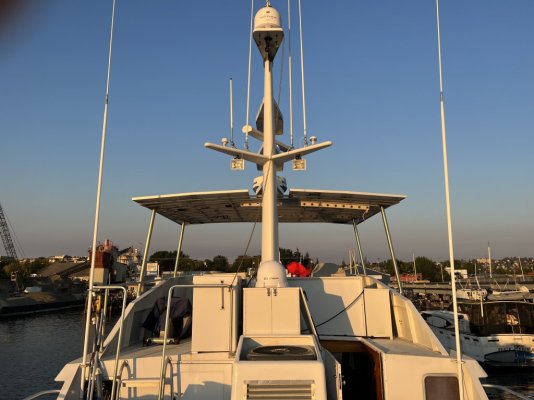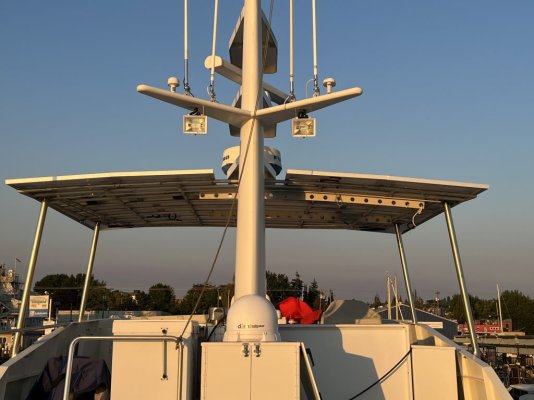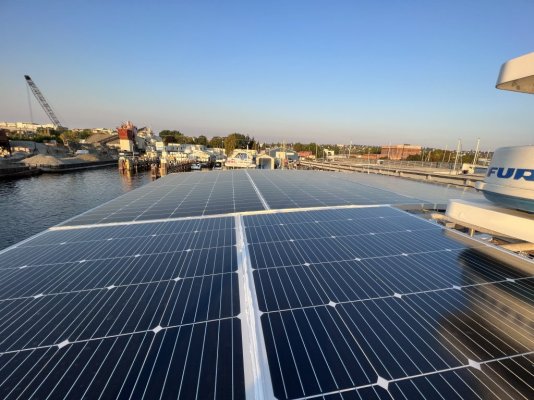grnelson98
Member
- Joined
- Feb 6, 2021
- Messages
- 9
- Location
- Florida
- Vessel Name
- Miss Peaches
- Vessel Make
- 2010 37 Seville Pilothouse Hull #19
We are considering a solar installation to keep the house batteries up while at anchor without the generator running periodically. Most of the pictures of the installations I can find look like the panels were installed on the pilot house roof, a panel either side of the hatch, although I have seen some boats mount them on or above the Bimini. I would be interested to know what others have done; mounting locations for the panels, total wattage of the panels, and do you feel it is / was worth while. Based on my calculations I think we need 600-800watts to hold the house loads and top off the house batteries on a daily basis assuming the sun is shining. Our two biggest house loads are the refrigerator and Starlink when it is running. Thanks in advance.

